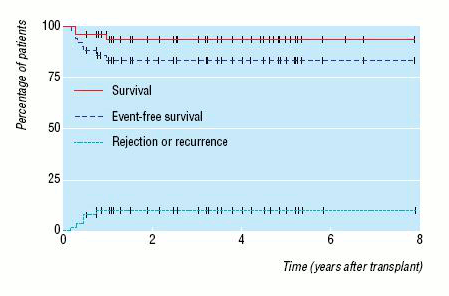Prognosis
Chronic organ damage secondary to sickle cell disease results in many medical complications, although some prophylactic treatments can reduce their incidence.
People with sickle cell disease have a reduced life expectancy. The estimated life expectancy of people with sickle cell disease in the US is more than 20 years shorter than the average for the general population.[4][111] One study, using data from patients covered by US public health insurance (from 2008 to 2016), estimated a life expectancy at birth of 52.6 years. Estimates of life expectancy were higher for women than men (55.0 vs 49.3 years) and lower for black people compared with non-black people (52.2 vs 55.1 years).[111] In one 2014 study conducted in the US, median survival for patients with sickle cell anaemia (Hb SS) was reported to be 58 years; the comparable figure for those with haemoglobin SC disease was 66 years.[112] In Africa, 50% to 90% of children born with sickle cell disease die before they reach their fifth birthday.[113]
In the developed world, morbidity and mortality are declining because of improvements in the management of infections and other complications in childhood, new interventions, active health maintenance for adults, and patient counselling. More than 90% of patients of all phenotypes will survive past 20 years of age, and significant numbers are older than 50 years of age.[39][Figure caption and citation for the preceding image starts]: Survival and recurrence rate for patients with sickle cell disease after bone marrow transplantationFrom: Claster S, Vichinsky EP. BMJ. 2003 Nov 15;327(7424):1151-5 [Citation ends].
Use of this content is subject to our disclaimer